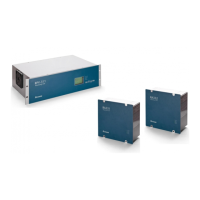Chapter 3 – Hardware Design
3
MECHANICAL IMPLEMENTATION
3.1 RPV311
3.1.1 MAIN FEATURES
Fan-less and no rotating part design
Trigger waveform recorder at 256, 128, or 64 points-per-cycle;
Continuous waveform recorder at 16 points-per-cycle;
Continuous disturbance recorder and trigger recorder (optional);
Trigger using Boolean logic equations;
Traveling wave recorder for fault location (optional);
MODBUS and DNP3 interface for SCADA integration (optional);
Synchrophasor measurement according to IEEE C37.118 (optional);
Power quality records:
o Historical average at aggregation intervals of 1 or 10 minutes (optional);
o Measurement and recording of harmonics up to the 50th order according to IEC 61000-4-7
(optional);
o Measurement and recording of flicker according to IEC 61000-4-15 (optional);
Cross-trigger using standard network connection;
One-end fault location based on Takagi algorithm;
Flexible communication:
o Two 10/100BaseT electrical Ethernet interfaces;
o Two embedded optical Ethernet converters;
o RS232 serial port for modem connection;
Support for IEC 61850:
o Up to 320 binary inputs related to GOOSE messages (optional);
o Two Ethernet ports for redundant connection (optional);
o One Ethernet port for Process Bus (Sampled Values) connection (optional).
Local interface on the front panel;
4 dry-contact relays for remote signalling;
Fax andor e-mail message after detection of a trigger. The fax can be sent to two different
destinations and the e-mail to four different destinations (optional).

